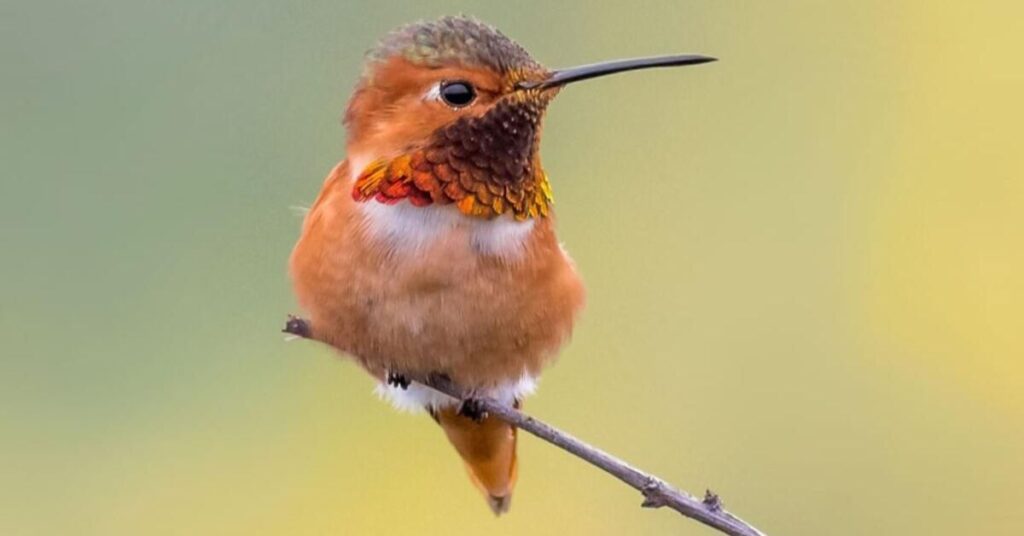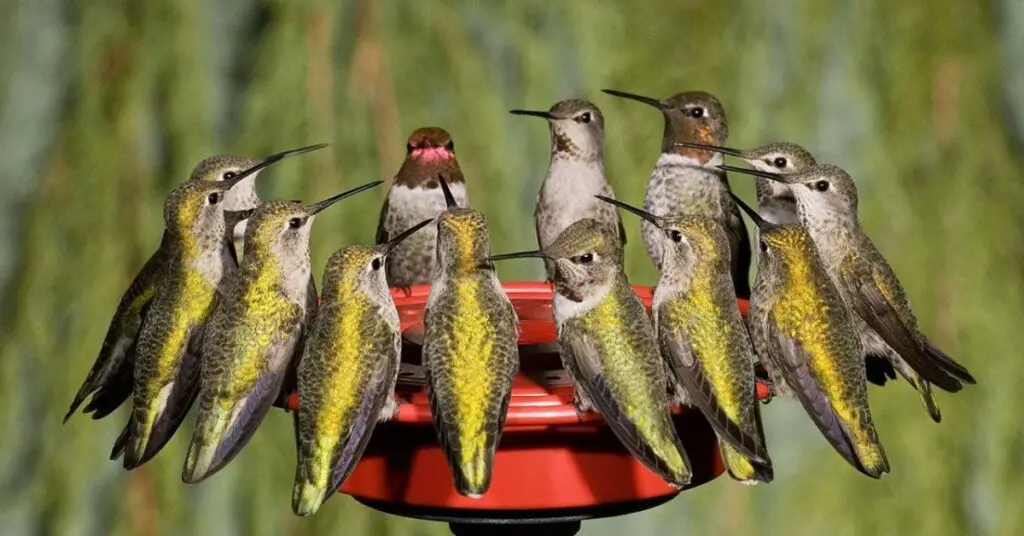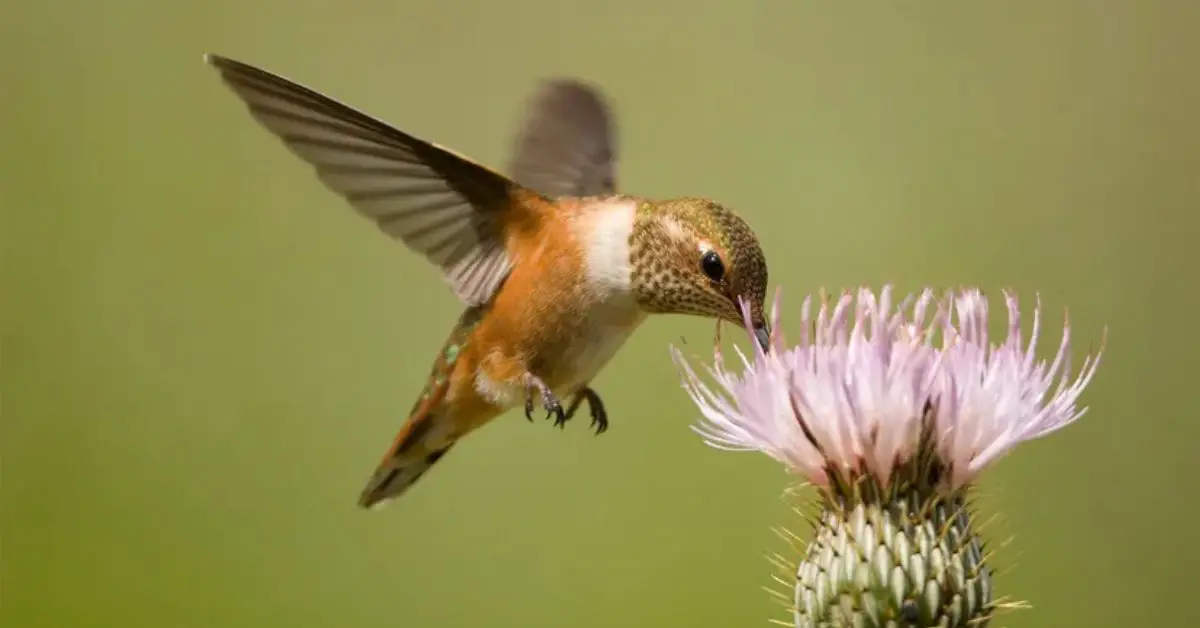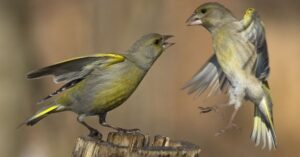Every year, millions of hummingbirds embark on an incredible journey that spans thousands of miles, navigating through changing landscapes and unpredictable weather. Understanding their migration patterns is not only fascinating but also vital for conservation efforts and birdwatching enthusiasts alike.
This article will provide you with an insightful hummingbird migration map, highlighting key routes and seasonal behaviors. By the end, you’ll have a clearer picture of these remarkable birds’ travels and how you can support their journey.
1. What Is A Hummingbird Migration Map?
1.1 Tracking The Journey Of Hummingbirds
A Hummingbird Migration Map serves as a vital tool for ornithologists, illustrating the complex journey these remarkable birds undertake each year. These maps chart the seasonal movements of various hummingbird species, showcasing their routes from breeding grounds in North America to wintering habitats in Central America and Mexico.
By highlighting key stopover points, such maps reveal not just the distances traveled but also the critical habitats that support these tiny aviators during their long migrations.

Tracking the journey of hummingbirds goes beyond mere observation; it unveils the intricate relationship between these birds and their environments. Through technology such as GPS tagging and citizen science initiatives, researchers are gaining unprecedented insights into migratory patterns and behaviors.
The data collected can inform conservation efforts by pinpointing areas that require protection to ensure these delicate creatures have safe passage during their journeys.
1.2 Why Migration Maps Are Important For Bird Enthusiasts
A Hummingbird Migration Map is a vital tool that tracks the seasonal movements of these fascinating birds as they journey between their breeding and wintering grounds. These maps are often created using data collected from bird watchers, researchers, and citizen scientists, showcasing real-time migration patterns and timing.
By illustrating the routes taken by different hummingbird species, the maps serve not only as a visual representation of migration but also highlight environmental factors that influence their travel, such as climate change and habitat availability.
2. The Incredible Journey Of Hummingbirds
2.1 Understanding Migration Patterns Of Hummingbirds
Hummingbirds are not just dazzling displays of color; their migration patterns reveal a remarkable resilience and adaptability. These tiny avian wonders embark on an epic journey that can span thousands of miles, often traveling solo or in small groups.
For many species, the migration from North America to Central America is triggered by a combination of instinctual cues and environmental changes, such as daylight length and temperature shifts. This instinct-driven navigation is nothing short of extraordinary, as they utilize the Earth’s magnetic fields and even the position of the sun to guide their way.
What sets hummingbirds apart is their ability to adapt their routes based on the availability of food sources. Unlike many migratory birds that follow set paths year after year, hummingbirds can shift their journeys to take advantage of blooming flowers and feeders along the way.
2.2 Key Factors Driving Hummingbird Migration
Hummingbird migration is a remarkable phenomenon shaped by a complex interplay of environmental cues and biological imperatives. One of the key factors driving their journey is the availability of food sources, particularly nectar-rich flowers.
As seasonal changes alter the landscape, these tiny avian travelers instinctively follow floral blooms northward in spring and southward in autumn.
Another critical factor influencing hummingbird migration is temperature fluctuations. As the chill of winter sets in, many species begin their journey south to warmer climates, where they can thrive without the harsh constraints of cold weather.
Studies have shown that some hummingbirds possess an innate ability to sense changes in barometric pressure, allowing them to anticipate storms or shifts in weather patterns. This remarkable adaptation ensures that they can navigate effectively, reducing the risks associated with their long-distance travels.
3. Popular Hummingbird Species And Their Migration Routes
3.1 Ruby-Throated Hummingbird: East Coast To Central America
Each spring, The Ruby-Throated Hummingbird embark on a treacherous flight from their wintering grounds in Central America to breeding territories across the eastern U.S. and Canada. What makes their migration particularly fascinating is the necessity for many of these hummingbirds to navigate across the Gulf of Mexico, a daunting 500-mile stretch over open water.
As they travel, Ruby-Throated Hummingbirds rely on various environmental cues, such as changes in light and wind patterns, to guide them along their route. Their arrival in North America coincides with the blooming of spring flowers, ensuring they have a plentiful food source upon their return.
3.2 Rufous Hummingbird: West Coast And Beyond
The Rufous Hummingbird, known for its vibrant reddish-orange plumage, is a remarkable traveler in the avian world. Primarily found along the Pacific Coast, this small yet tenacious bird embarks on one of the longest migrations of any North American hummingbird.
Each year, it journeys from its breeding grounds in Alaska and Canada to wintering sites in Mexico, a trek that can exceed 3,000 miles. What sets the Rufous apart is not just its distance but also its fierce territorial behavior, often defending feeding spots with an audacity that belies its size.
3.3 Black-Chinned Hummingbird: Desert And Mountain Areas
The Black-Chinned Hummingbird, scientifically known as Archilochus alexandri, is a remarkable species that thrives in the diverse environments of desert and mountain areas across the western United States and into Mexico.
This small bird, easily recognized by its iridescent black throat, exhibits fascinating adaptations to survive in arid landscapes. Its striking plumage not only serves as a display during courtship but also helps it blend into the rocky terrains, providing camouflage from potential predators.
During migration, the Black-Chinned Hummingbird embarks on an impressive journey, often traveling over vast distances between its breeding grounds in the southwestern U.S. and wintering sites in Mexico. This species is particularly adept at navigating challenging landscapes, using thermal currents to conserve energy while soaring over mountains and valleys.
4. Seasonal Migration Timelines
As winter’s grip loosens, a remarkable transformation unfolds across North America. Spring migration marks the return of a diverse array of bird species, each with its own unique timeline and route back to the United States.
Many species, such as the iconic American Robin and the vibrant Indigo Bunting, begin their journey as early as late February, navigating thousands of miles from their tropical wintering grounds.

The peak of spring migration typically occurs between March and May, with different species arriving at various times to optimize their chances of survival and reproduction.
4.2 Fall Migration: Journey To Warmer Climates
As the days grow shorter and temperatures begin to dip, countless bird species embark on their remarkable fall migration, a journey that is as much about survival as it is about instinct. This annual trek sees millions of birds traverse vast distances, often covering thousands of miles in search of warmer climates where food is more abundant.
Species like the Arctic Tern, which holds the record for the longest migration of any animal, can travel from breeding grounds in the Arctic to wintering spots in the Antarctic, demonstrating nature’s extraordinary navigation skills.
4.3 Differences Between Juvenile And Adult Migration Patterns
Juvenile and adult birds exhibit distinct migration patterns that reflect their varying life stages and experiences. Young birds, often less experienced and still honing their navigational skills, tend to migrate at different times than adults.

Juveniles may start their journey later in the season, coinciding with the availability of food sources along the migratory route. This delayed departure can be a strategic choice, allowing them to capitalize on abundant insect populations or ripening fruits that are crucial for their survival during travel.
5. How To Read A Hummingbird Migration Map
5.1 Understanding Color-Coded Routes And Timelines
When examining a hummingbird migration map, the first step is to decode the color-coded routes that indicate different species and their migratory paths. Each color typically corresponds to a specific hummingbird species, allowing birdwatchers to identify which birds are likely to be seen in various regions during migration seasons.
A green line might represent the Ruby-throated Hummingbird’s route, while a striking blue line could signify the path of the Rufous Hummingbird. This visual differentiation not only enhances the map’s usability but also adds an element of excitement as you track the journeys of these remarkable birds.
The timelines often display when specific areas will experience peak migration activity, enabling enthusiasts to plan their observations effectively. Recognizing that weather patterns can influence migration timing offers deeper insights into the adaptability of hummingbirds.
5.2 Recognizing Stopover Points And Feeding Zones
Understanding stopover points and feeding zones on a hummingbird migration map is crucial for both avid birdwatchers and conservationists. These areas serve as vital resting spots where hummingbirds replenish their energy after long flights.
When interpreting the migration map, look for regions highlighted in vibrant colors or marked with symbols indicating rich nectar sources, such as flowering plants or feeders. These zones are typically located near water sources or in areas with abundant blooms, making them essential for the birds’ survival during their arduous journey.
6. Creating A Hummingbird-Friendly Stopover
6.1 Setting Up Feeders For Migrating Hummingbirds
To create a welcoming stopover for migrating hummingbirds, setting up feeders is essential. Start by using high-quality nectar solutions, ideally a mix of one part sugar to four parts water, avoiding red dyes that can be harmful.
Position your feeders in shaded areas to keep the nectar cool and fresh, as heat can ferment the mixture. Opting for feeders with bee guards can help deter unwanted insects while ensuring the delicate birds have easy access to their food source.
Consider the placement of your feeders strategically. Hummingbirds are naturally drawn to vibrant colors, so choose feeders that are brightly colored or incorporate colorful flowers nearby.
Position them near native flowering plants that bloom in succession, providing a continuous food supply during migration. Regularly clean your feeders every few days to prevent mold and bacterial growth, ensuring the health and safety of your feathered visitors.
6.2 Planting Nectar-Rich Flowers To Attract Birds
Planting nectar-rich flowers is crucial for creating a hummingbird-friendly stopover in your garden. These vibrant birds are drawn to bright, tubular blooms that provide easy access to the sugary nectar they crave. Choosing native plants not only supports local ecosystems but also ensures that the flowers are well-adapted to the climate and soil conditions of your area.
6.3 Providing Water And Shelter For Resting Birds
To create a welcoming stopover for hummingbirds, providing water and shelter is essential. Fresh, clean water sources not only hydrate these tiny birds but also serve as a place for them to bathe, keeping their feathers in optimal condition.
Consider incorporating shallow dishes or bird baths with gently sloping edges that allow easy access. Adding pebbles or stones can create perches and provide a safe landing spot, making it easier for hummingbirds to drink without the risk of drowning.
See More: “How To Attract Hummingbirds With Water Or Baths“
Shelter is equally important, offering protection from predators and harsh weather. Dense shrubs, ornamental grasses, or even strategically placed trees can provide ideal cover. Native plants are particularly beneficial, as they attract insects that serve as a food source and enhance the natural habitat.
7. Fascinating Facts About Hummingbird Migration
7.1 Longest Recorded Hummingbird Journeys
The migration of hummingbirds is a marvel of nature, with some species undertaking astonishing journeys that defy expectations. The Ruby-throated Hummingbird, embarks on a remarkable trek of up to 3,000 miles from breeding grounds in North America to winter habitats in Central America.
This migration often includes a non-stop flight across the Gulf of Mexico, where these tiny birds can travel for over 18 hours without rest. Such endurance is not just a feat of stamina; it showcases their incredible physiological adaptations, allowing them to tap into energy reserves and navigate through challenging environments.
Not all hummingbirds follow the same migratory routes. The Anna’s Hummingbird, primarily found along the Pacific Coast, has been known to remain in its habitat year-round due to milder climates, demonstrating a fascinating shift in behavior influenced by environmental conditions.
7.2 How Hummingbirds Navigate Across Continents
Hummingbirds exhibit remarkable navigational abilities during their migration, relying on a combination of innate instincts and environmental cues. These tiny aviators can travel thousands of miles, with some species like the Ruby-throated Hummingbird making a non-stop journey of up to 500 miles across the Gulf of Mexico.
Hummingbirds possess an extraordinary memory that aids them in finding feeding sites and recognizing specific routes. This cognitive ability allows them to recall the locations of flowers and feeders they visited in previous migrations.They are believed to use the position of the sun during the day and the stars at night as reference points for navigation.
8.3 Survival Challenges During Migration
Hummingbirds face an array of survival challenges during their arduous migration. One of the most pressing issues is the scarcity of food sources along their migratory routes. These tiny birds rely heavily on nectar from flowers, but as they travel, the availability of blooms can be unpredictable due to weather conditions and seasonal changes.
In areas where flowers have not yet bloomed or where drought has taken hold, hummingbirds may struggle to find sufficient sustenance, putting their energy reserves at risk.
Predation is another significant threat that these delicate creatures encounter during migration. As they stop to refuel, hummingbirds become vulnerable to larger birds and other predators that may be lurking nearby. Inclement weather poses a formidable challenge, as strong winds and storms can disrupt their flight patterns, forcing them to expend more energy than anticipated.
8. Regional Insights On Hummingbird Migration In The USA
8.1 East Coast Highlights: Ruby-Throated Migration
The East Coast serves as a crucial migratory pathway for the Ruby-throated Hummingbird, particularly during the spring and fall seasons. As these tiny aviators journey from Central America to their breeding grounds in North America, they rely on a series of waypoints that are rich in nectar-producing flowers.
Coastal gardens and urban parks become vital havens for these birds, offering sustenance during their exhausting travels.
Warmer temperatures may cause some flowers to bloom earlier, potentially leading to mismatches between the timing of flowering and the arrival of hummingbirds. This emphasizes the importance of understanding local ecosystems and planting native species that align with the birds’ natural schedules.
8.2 West Coast Insights: Rufous Migration Routes
The Rufous hummingbird, known for its fiery plumage and tenacious spirit, embarks on one of the most remarkable migration journeys along the West Coast. Each spring, these tiny aviators begin their trek from wintering grounds in Mexico to summer breeding territories in the Pacific Northwest.
8.3 Central USA: Key Stopover Locations
The Central USA serves as a vital corridor for hummingbirds during their migratory journey, with several key stopover locations playing crucial roles in their survival. One notable hotspot is the Ozark Mountains, where lush forests and diverse flower species create an inviting environment.

Another significant stopover is the Great Plains, particularly areas rich in wildflowers like coneflowers and milkweeds. These regions not only provide essential nourishment but also serve as strategic resting points amidst expansive stretches of land.
Conclusion
The Hummingbird Migration Map serves as a vital resource for understanding the incredible journeys these small birds undertake each year. By tracking their migration patterns, researchers can gain insights into environmental changes and the health of ecosystems.
FAQ’s
Where Do Most Hummingbirds Migrate To?
Most hummingbirds migrate to warmer regions during the colder months, primarily seeking food sources and suitable breeding conditions. In North America, the most common species, the Ruby-throated Hummingbird, migrates from the eastern United States and Canada to Central America, particularly Mexico.
Do Hummingbirds Migrate In California?
Yes, hummingbirds do migrate in California, although the specifics can vary by species. The most common species found in California, the Anna’s hummingbird, is unique because it is one of the few hummingbirds that can be found year-round in the state.
How Accurate Are Migration Maps?
Migration maps can vary significantly in their accuracy depending on several factors, including the source of the data, the methodology used to collect and analyze it, and the time frame being represented.
Generally, these maps are created using a combination of satellite imagery, GPS tracking, and statistical models that incorporate ecological, environmental, and social factors.
- How To Keep Bees Away From Hummingbird Feeders - March 20, 2025
- How To Attract Owls To Your Yard - March 11, 2025
- Breeding Season For Wild Birds - March 9, 2025








